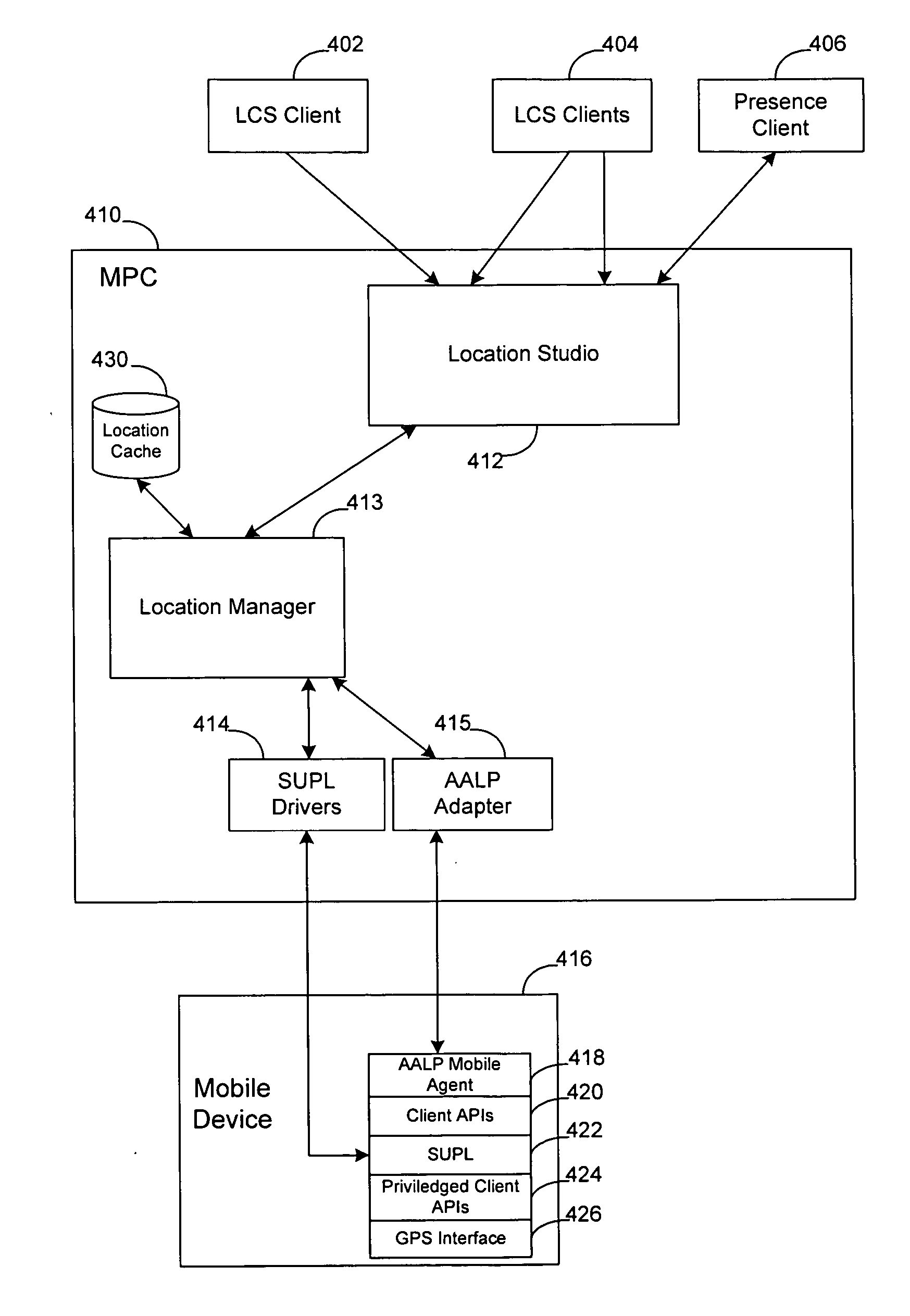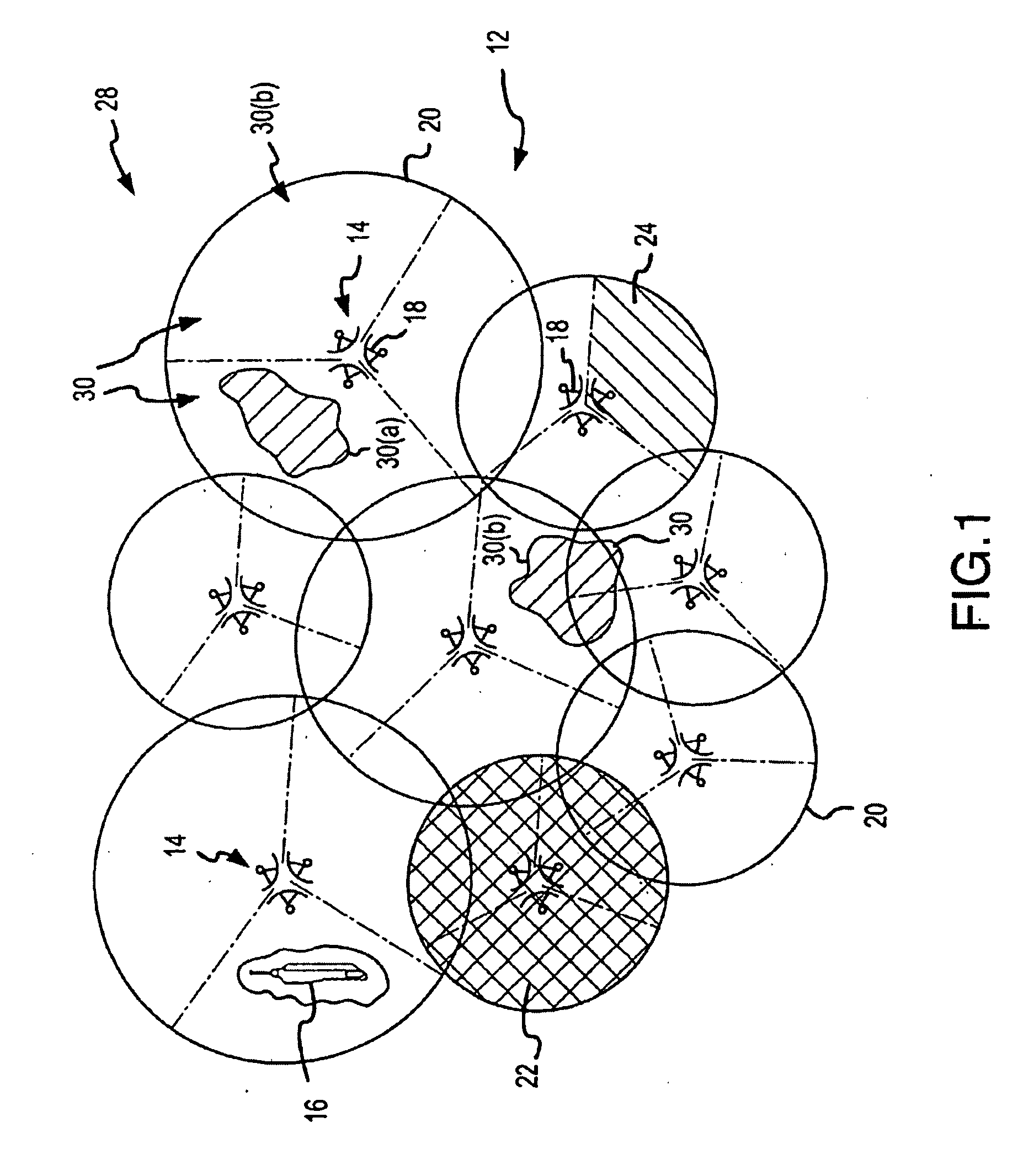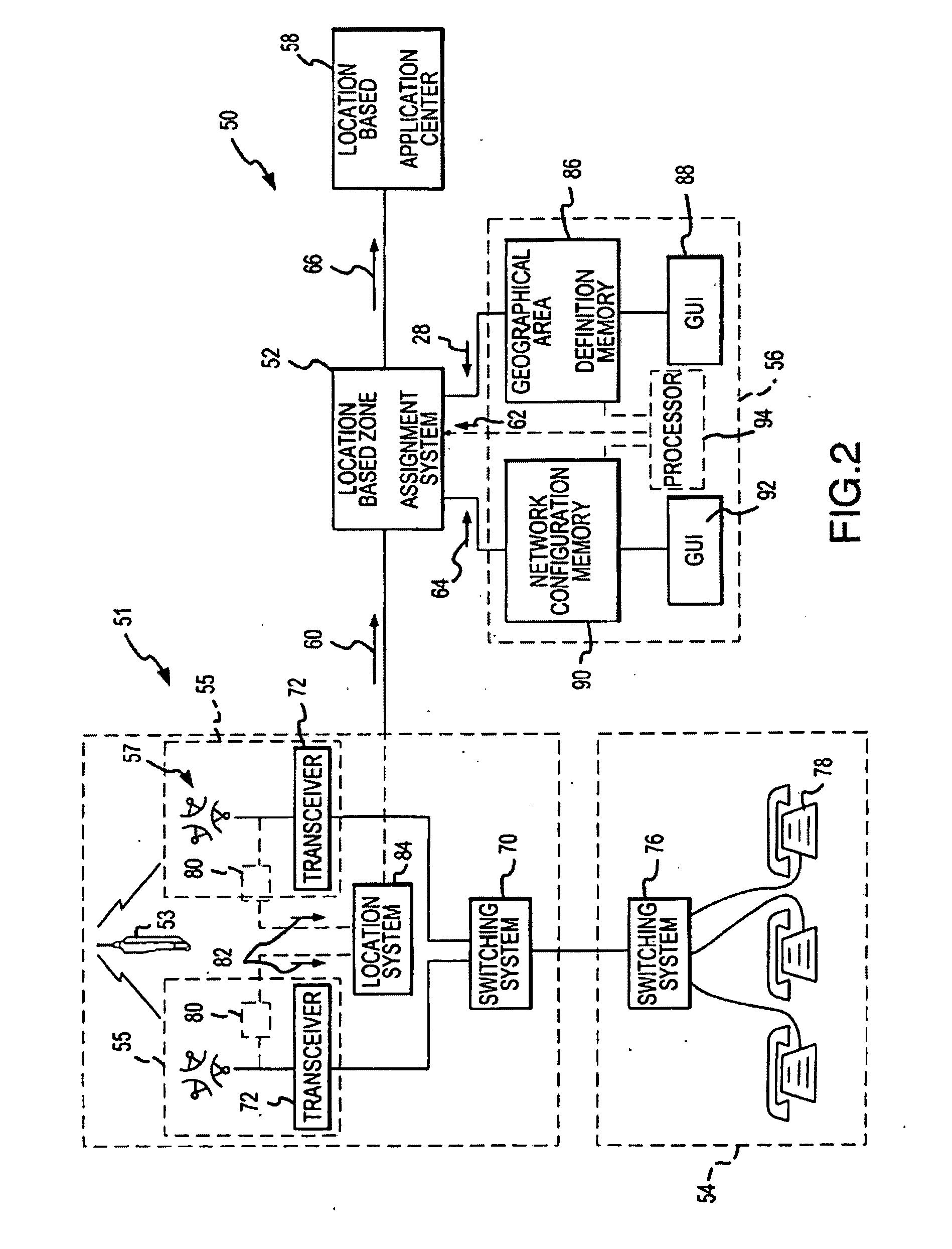Wireless network with adaptive autonomous location push
a wireless network and autonomous positioning technology, applied in the field of wireless communication systems, can solve the problems of reducing emergency response time and possibly saving lives, affecting the widespread deployment of commercial location-based services, and considerable latency associated with determining a location, so as to improve support, reduce network load, and power and compelling location-based applications.
- Summary
- Abstract
- Description
- Claims
- Application Information
AI Technical Summary
Benefits of technology
Problems solved by technology
Method used
Image
Examples
Embodiment Construction
[0027]FIG. 1 shows an operating environment of a location-based zone assignment system for a wireless communication network 12, within which the invention may be embodied. For purposes of illustration, the wireless communication network 12 is shown as a cellular communications network. However, it will be understood that the wireless communication network 12 may include other types of wireless communication networks without departing from the scope of the present invention. For example, the wireless communication network 12 may include a satellite communication network, a two-way radio communication network, or any other suitable wireless communication network.
[0028] Referring to FIG. 1, the wireless communication network 12 includes a number of base stations 14 that can communicate with a wireless communication device 16. Each communication between the wireless communication device 16 and the base stations 14 will be referred to generally as a call, although it will be appreciated...
PUM
 Login to View More
Login to View More Abstract
Description
Claims
Application Information
 Login to View More
Login to View More - R&D
- Intellectual Property
- Life Sciences
- Materials
- Tech Scout
- Unparalleled Data Quality
- Higher Quality Content
- 60% Fewer Hallucinations
Browse by: Latest US Patents, China's latest patents, Technical Efficacy Thesaurus, Application Domain, Technology Topic, Popular Technical Reports.
© 2025 PatSnap. All rights reserved.Legal|Privacy policy|Modern Slavery Act Transparency Statement|Sitemap|About US| Contact US: help@patsnap.com



